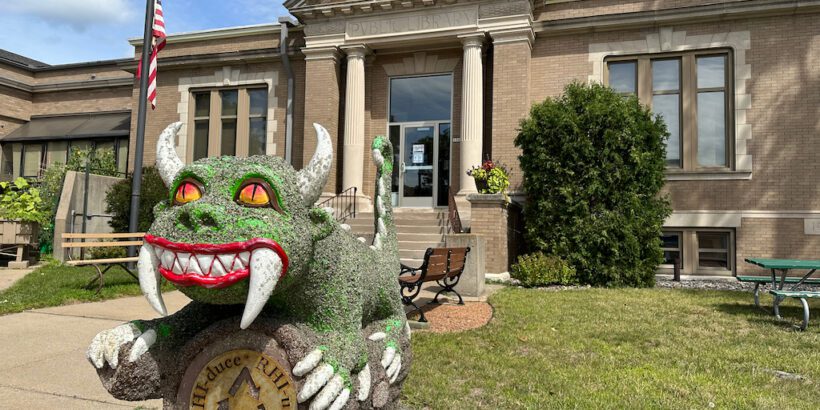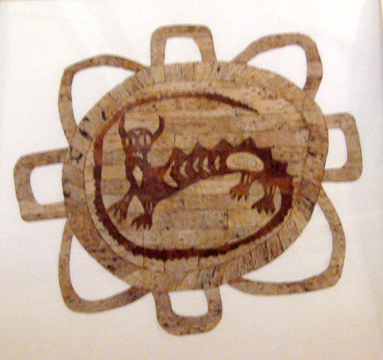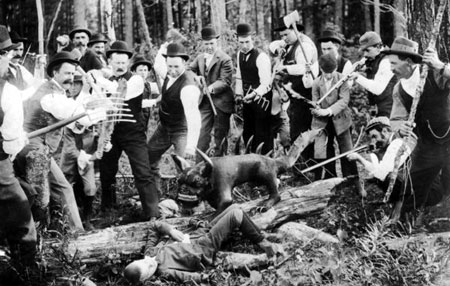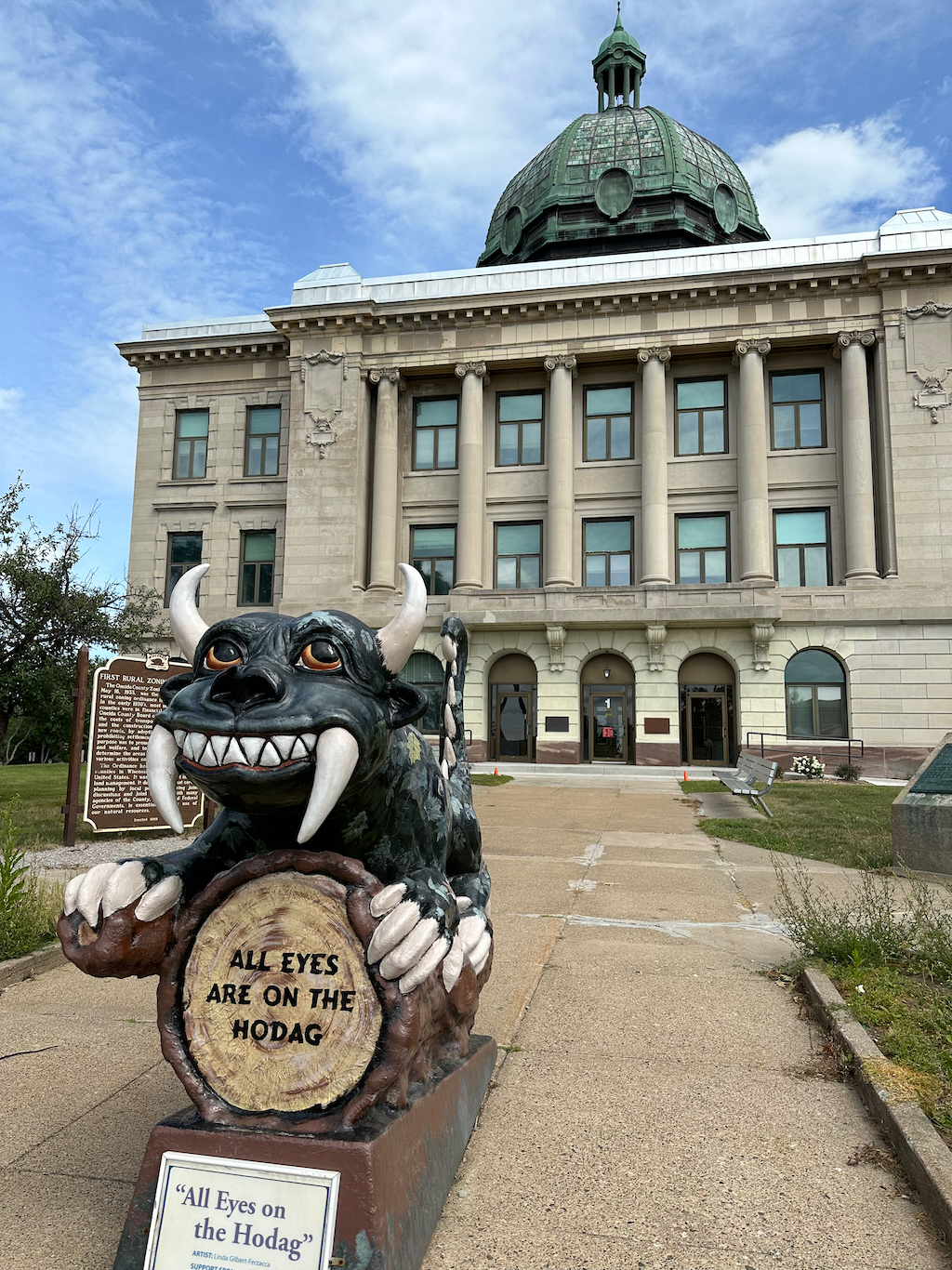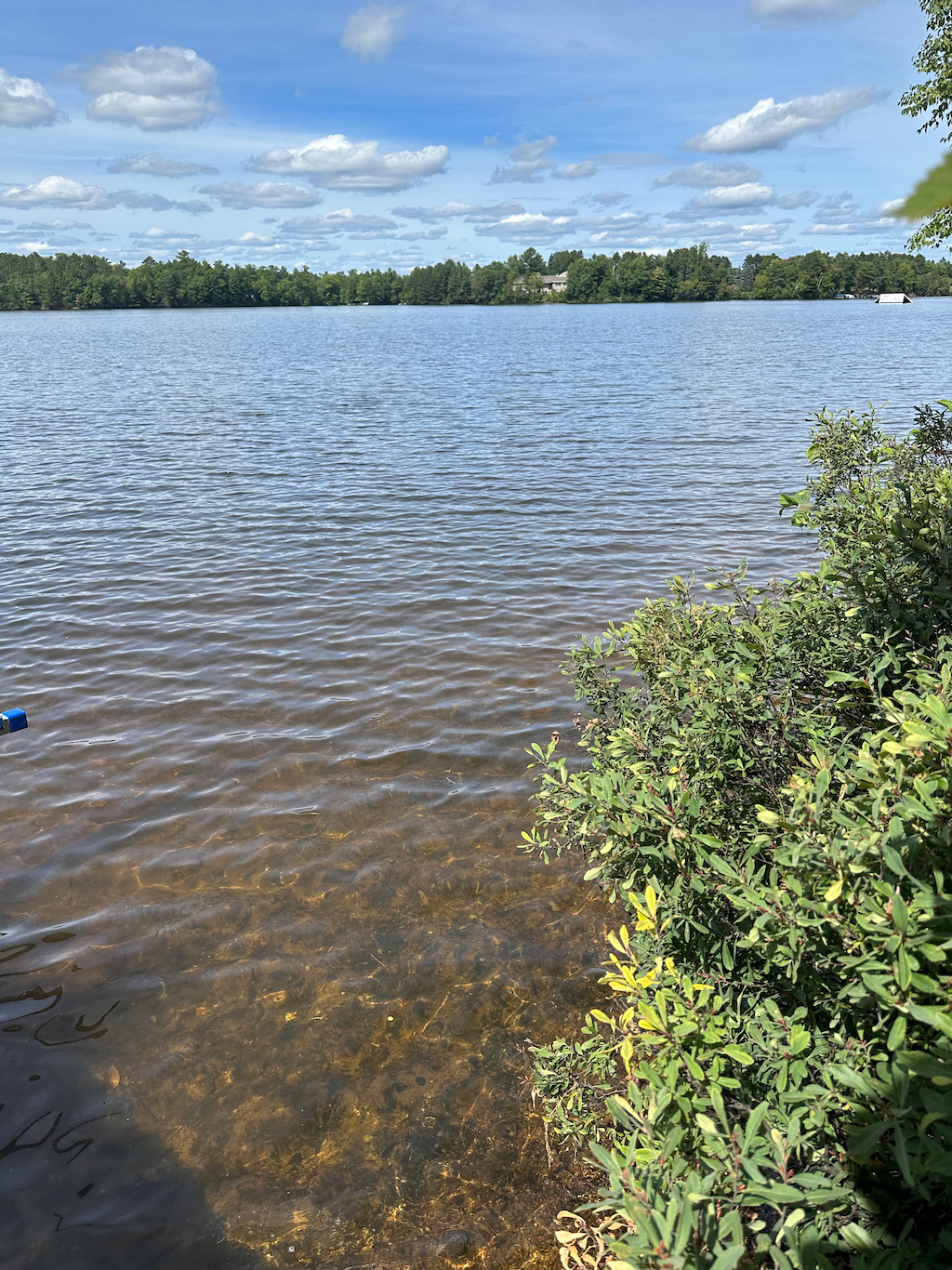As you journey through the northern reaches of Wisconsin and breeze through the charming town of Rhinelander, keep your eyes peeled for something out of the ordinary: an assortment of mythical monsters located throughout the town.
These curious beings, known as “Hodags,” have left their playful mark on everything from buildings to storefronts, inviting you to immerse yourself in their enchanting folklore.
Hodags find their place in the league of legendary beings that include icons like Bigfoot and the chupacabra – enigmatic creatures that have etched themselves into our imagination.
But where did their story come from?
The origins of the Hodag tale could potentially trace back to the indigenous inhabitants of the region, notably the Anishinaabe people.
One of the important mythical beings that existed within their culture was the underwater panther, also called “Mishipeshu.”
Some report it to be a large, serpentine creature with the head and paws of a lynx, the horns of a deer, and the scales of a fish and legends suggest it resides within the depths of lakes and rivers, perhaps linked to storms and unfavorable weather patterns.
Pictographs of the animals have been found in the great lakes area in places like Agawa Rock, Ontario, and it has a pretty striking resemblance to a Hodag, though there are some key differences.
But how exactly did the Hodag become synonymous with the town of Rhinelander, Wisconsin?
Back in the late 1800s, whispers of a formidable creature dwelling in the woods began to circulate. Amidst the lumber-camp bunkhouses, where tales spun like wildfire and entertainment was scarce, the notion of a 7-foot behemoth with luminous eyes frequently stirred restless nights for those who braved the stories.
Then, in the year 1893, the folklore transformed into reality as a newspaper reported the alleged unearthing of a Hodag in Rhinelander.
The articles claimed the Hodag had “the head of a frog, the grinning face of a giant elephant, thick short legs set off by huge claws, the back of a dinosaur, and a long tail with spears at the end”.
The intricate account was set in motion by none other than Eugene Shepard, a prominent figure in Wisconsin known not just for his role as a land surveyor and timber cruiser, but also as a skilled prankster.
Interestingly, Shepard held ties with the Anishinaabe community, a connection that likely infused his creative well with the inspiration for this elaborate tale.
In any event, Shepard claimed to have worked with other lumberjacks and (accidentally?) used dynamite to slay the beast which is why they only had its charred remains for the photo they took.
The report caused quite a commotion in the region, yet little did they know that the real sensation was yet to unfold three years later.
In 1896, Shepard took his claims a step further by asserting that he had successfully captured yet another Hodag, and astonishingly, this time it was alive!
According to his account, he enlisted the aid of bear wrestlers who employed a long pike pole (logging tool) with a sponge at the end soaked with chloroform to subdue the creature within the confines of a cave.
And that is how they caught the Hodag but not before it made a meal of an unfortunate white bulldog.
A mere picture would not be the product of this Hodag catch though.
Instead, he took it on tour throughout the state.
The creature made its public debut at the inaugural Oneida County fair, where fascinated attendees eagerly paid to catch a glimpse of the enigmatic Hodag. Scores of individuals flocked to witness the spectacle, often with a mix of fascination and apprehension.
Within the confines of dimly lit tents, Shepard showcased the creature, ingeniously attaching wires to it in order to simulate movement and instill a sense of fear among the curious onlookers.
Before long, this spectacle generated an immense buzz that rippled across the nation, catching the attention of luminaries like P. T. Barnum.
In fact, the sensation grew to such proportions that a team of scientists from the Smithsonian Institution contemplated an expedition to Rhinelander for a thorough investigation.
It was at this juncture that Shepard finally conceded, revealing that the Hodag, his rendition, at least, had been a carefully crafted fabrication.
Indeed, his confession revealed that he had fashioned the creature out of carved wood, adroitly embellishing it with a blend of animal hides and horns to achieve an eerily realistic appearance.
But since then, the Hodag legend and folklore has lived on, continuing to capture the imagination and fascination of many.
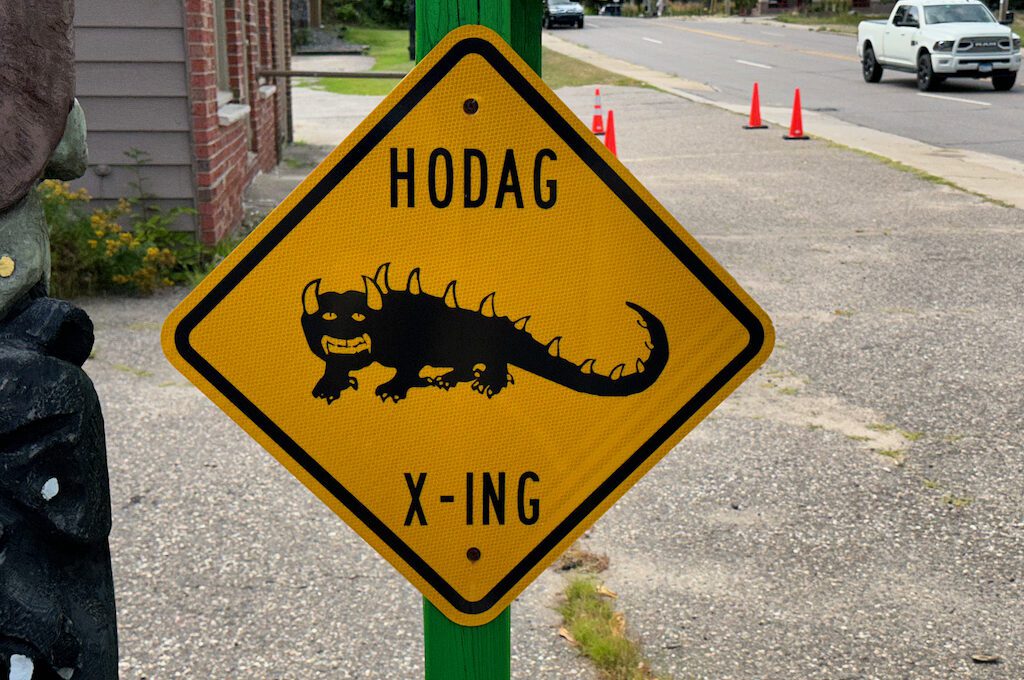
Even in present times, there are locals who claim to have spotted the creature, endowing it with a sort of Sasquatch-like reputation.
Others share tales of sightings that often lean toward the comical. For instance, golfers in the vicinity of Rhinelander have attributed vanishing golf balls to the Hodag’s mischief.
When it comes to Rhinelander, the town has wholeheartedly embraced its association with the Hodag, integrating it into the very fabric of its identity and culture.
Stroll around the city, and you’ll encounter sculptures or references celebrating these remarkable creatures at seemingly every turn.
One of the most striking sculptures is found right in front of the Rhinelander Area Chamber of Commerce, which many people will see as they enter the town.
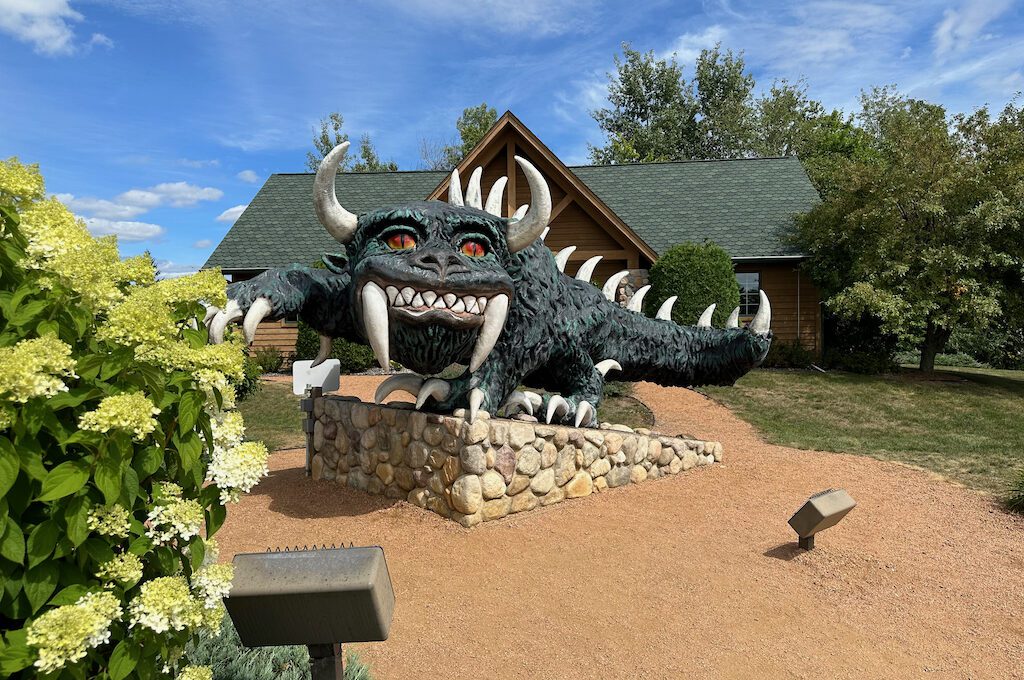
Don’t miss the Hodag in front of the Oneida County Courthouse and another in front of the library.
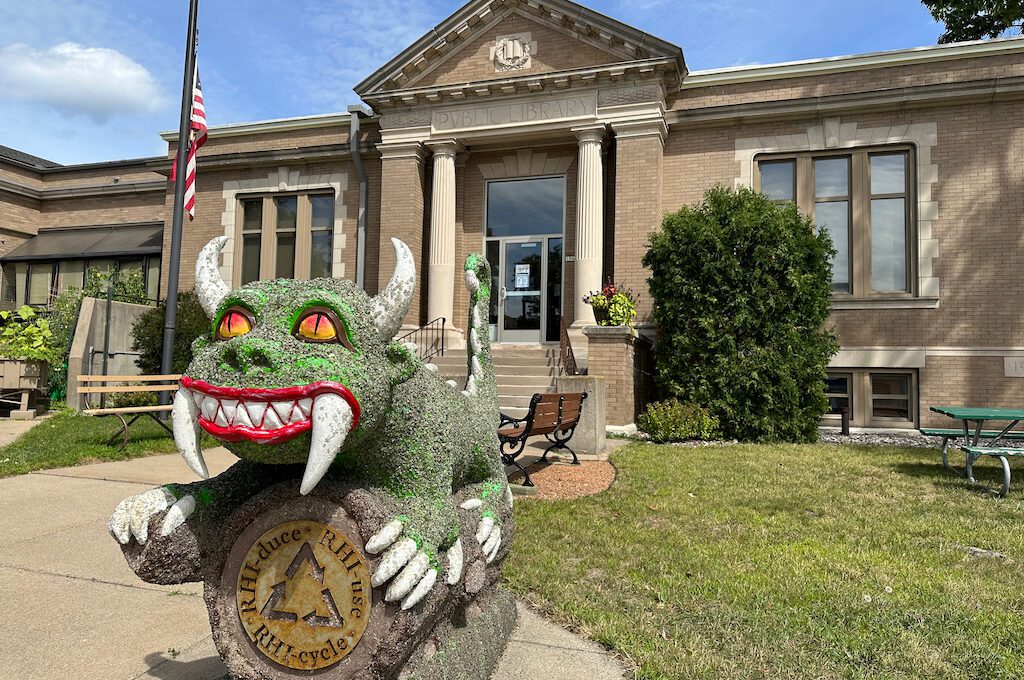
You’ll also see them referenced throughout the city in store names, ambulances, busses, the high school mascot, and pretty much everywhere you can imagine including a stain glassed window on a church.
And of course, you’ll have to stop by The Hodag Store when in town.
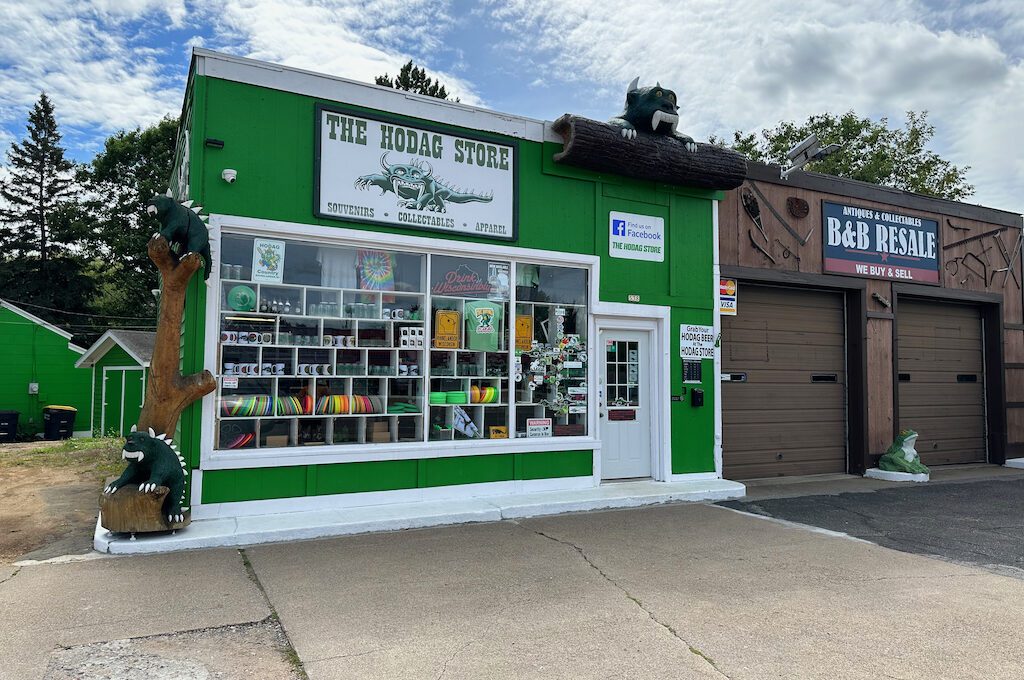
While Hodags might have eluded your memory or escaped your attention, they’ve stealthily left their mark on pop culture across the decades.
J.K. Rowlings’ Fantastic Beasts and Where to Find Them mentioned them as “horned, with red, glowing eyes and long fangs, and the size of a large dog.”
They were also featured in a 2012 episode of Scooby Doo and on on the Travel Channel series “Mysteries at the Museum.” Not to mention various YouTube videos.
For me, I’d never heard of the Hodag until we were driving through Rhinelander on the tail end of a very long trip to the Upper Peninsula.
We noticed the Hodag sculptures and just as we were leaving town, I told Brad we’ve got to make a U-turn to uncover the mystery behind these creatures.
Being a Sunday, my exploration options were somewhat constrained, as many of the establishments I would have hoped to visit were unfortunately closed.
But that didn’t stop me from taking a quick survey of the city and finding out more about these interesting creatures and the backstory of their folklore.
As I hurriedly delved into my research, the narrative of the Hodags instantly captivated me.
Exploring such tales is not only entertaining but also serves as a gateway, enticing individuals to delve into a locale they might otherwise have simply passed by without a second thought.
As we traversed the town, we unearthed picturesque lakes and enchanting forest landscapes that gave us a newfound admiration for this town of just over 8,000 people. Had it not been for being on the road for 23 long hours, I would’ve probably spent more time exploring this town.
Though my encounter with the Hodag was fleeting, the tale has etched itself into my consciousness, and I now stand as a novice custodian of the Hodag folklore, ready to share it with anyone willing to lend an ear!
Daniel Gillaspia is the Founder of UponArriving.com and the credit card app, WalletFlo. He is a former attorney turned travel expert covering destinations along with TSA, airline, and hotel policies. Since 2014, his content has been featured in publications such as National Geographic, Smithsonian Magazine, and CNBC. Read my bio.

